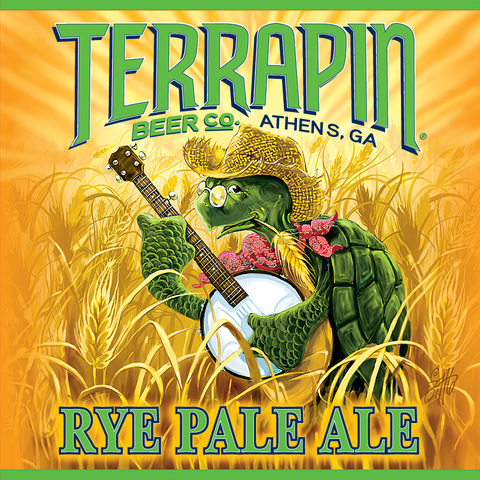Taste: the final frontier. These are
the voyages of the Sous Brewer. His ongoing mission: to explore strange new beers,
to seek out fascinating flavors and peculiar brewing methods, to boldly go
where most beer drinkers have never gone before.
 |
| These are the voyages |
If taste
is truly something you covet in your malted-barley based deliciousness, you owe
it to yourself to try rye (which technically is a contrary grain to barley,
however as most rye beers today are still majority barley, making the barley
the base malt, they are still considered barley-based delicious… oh no, I've gone cross-eyed).
 |
| Amber waves of grain... |
Rye
beer, as an industry term, simply refers to a beer in which rye is substituted
for barley in a percentage of the mash. It doesn't specify how much of a
percentage, but most commercial rye beers average between 10-20% of the mash. Home brewers who really love rye have pushed it to near 50%, but not without
driving themselves crazy along the way.
The
reason they are often driven to madness by this simple grain is that this grain
is particularly challenging to work with. Unlike barley, which is fibrous (resistant
to mushiness) and has husks on it through which wort can pass while being
lautered / sparged, rye is not fibrous and is husk-less The result is a mash that
becomes a sticky mess and takes FOREVER to lauter / sparge. Thus, the lower the
percentage of rye in your mash, the less misery you bring on yourself.
This
problem is somewhat mitigated in a commercial setup where the rig is more
awesome, but the intense flavor of rye can make for a marketing nightmare if
too much is used. While we beer nerds love the flavor of rye, not everyone is
ready for it, and unsold beer isn't good for anybody.
Fortunately,
rye’s intense flavor allows commercial and home brewers alike to tone down the
percentage and still achieve a pretty awesome result.
 |
| Masking their hops since 2002 |
What is
this result you ask? Rye beers routinely are spicier, more sour, and dryer than
a beer made without rye. The flavor is very obvious (depending on how much rye
was used) and usually dominates on the back of your palate. It is so pronounced
that many if not most people are not enthusiastic the first time they drink it.
But like so many things in the beer world, your palate can be trained, and just
because you don’t like something the first time doesn't mean you never will.
Believe it or not, I couldn't stand IPAs the first time I had one, but I grew
up.
The
unfortunate side of this flavor coin, getting back to the commercial brewers
shying away from it in order to appeal to mass consumers, is that rye remains a
low-key part of commercial operations. The majority of commercial rye use in beer
is as a flavoring component used to add complexity to an existing flavor
payload, but not as a main flavor itself.
Rye is
starting to have a revival in the United States. There is a story out of
Georgia that the Terrapin Brewing Company in Athens, GA began brewing with rye
in order to mask the hops of their American Pales Ales and IPAs because “people
in the southeast don’t like bitterness.” Meanwhile, several breweries around
the country are bringing back an old Bavarian beer style called roggenbier,
which is essentially a hefeweizen made with rye instead of wheat. In fact, the
newly minted Forge Brew Works in Lorton, VA has created a phenomenal roggenbier
that I highly recommend to anyone in the Northern Virginia area.
 |
| It fit so nice, he said I could keep it. |
Speaking
of rye-related news in the Northern Virginia area, I am currently in the
process of brewing a collaboration brew with the Donnaubles Brewing Company out
of Centreville, VA called Dread Pirate RYEberts Rye-P-A. For the recipe, we are
using rye for roughly 10% of the total fermentables, which will be a delicate
compliment to the hops in the final product. There will be no survivors.
As for
your purposes, I highly recommend going to your local package store or purveyor
of fine craft beer and look for rye beers. Give them a chance, expand your mind
and take the red pill – the flavor is tremendous, and once your palate is
ready, you’ll discover a brave new world of craft beer to explore. Trust me, as
a traveler who has made this quest and returned to tell about it, it’s worth
the trip.
Here’s
to craft-brewed happiness… Cheers!
No comments:
Post a Comment